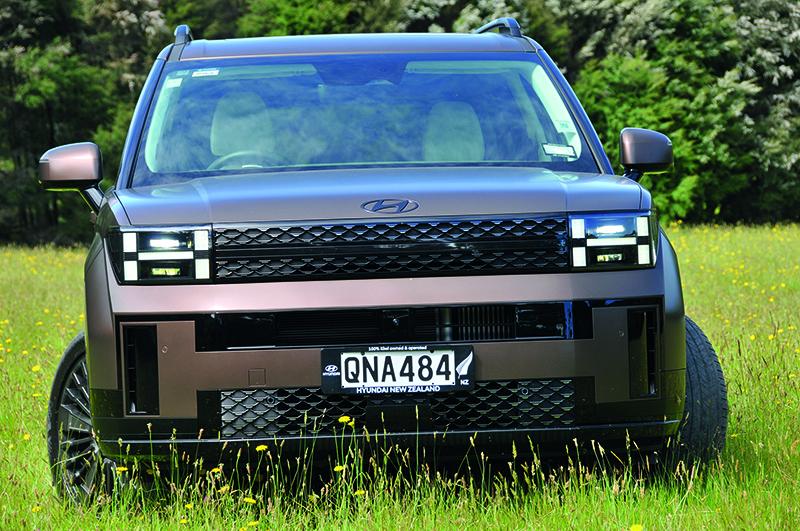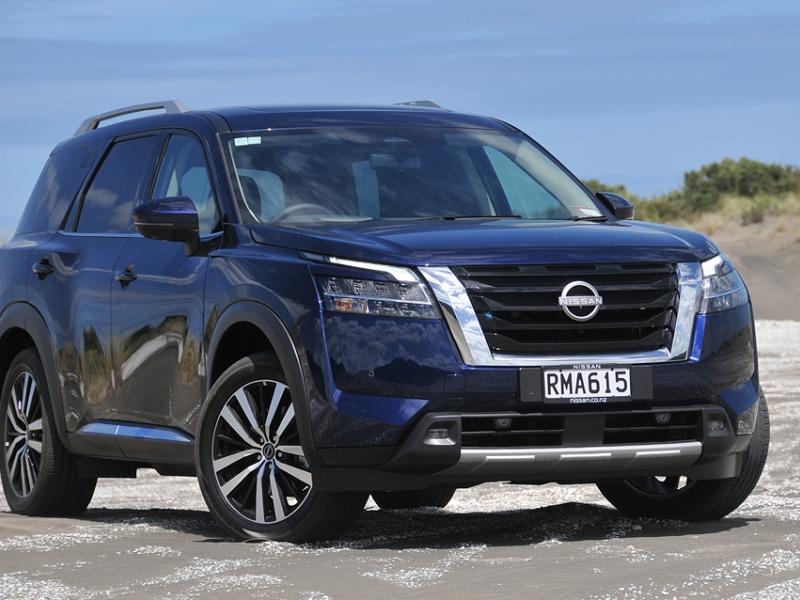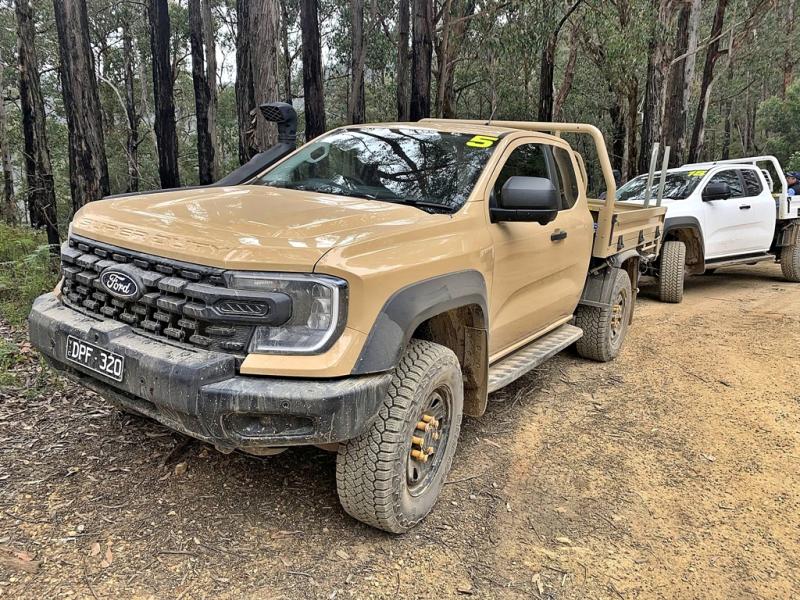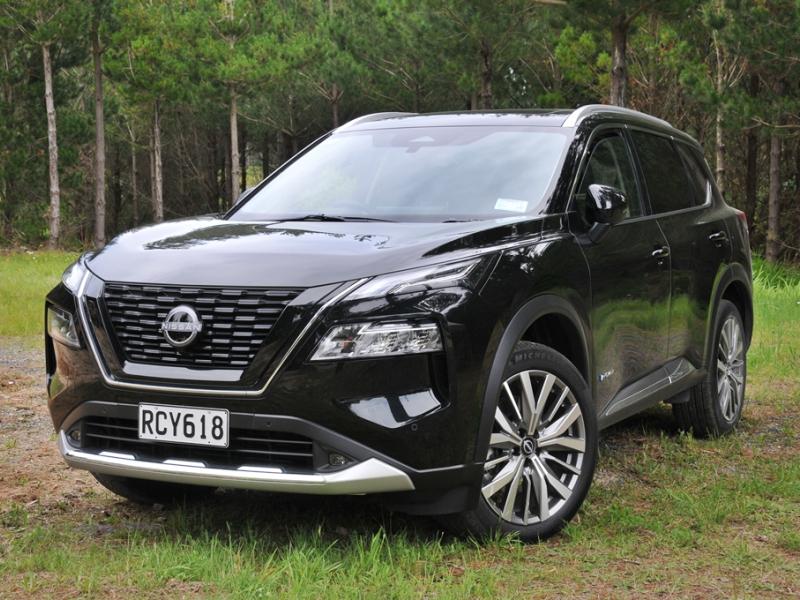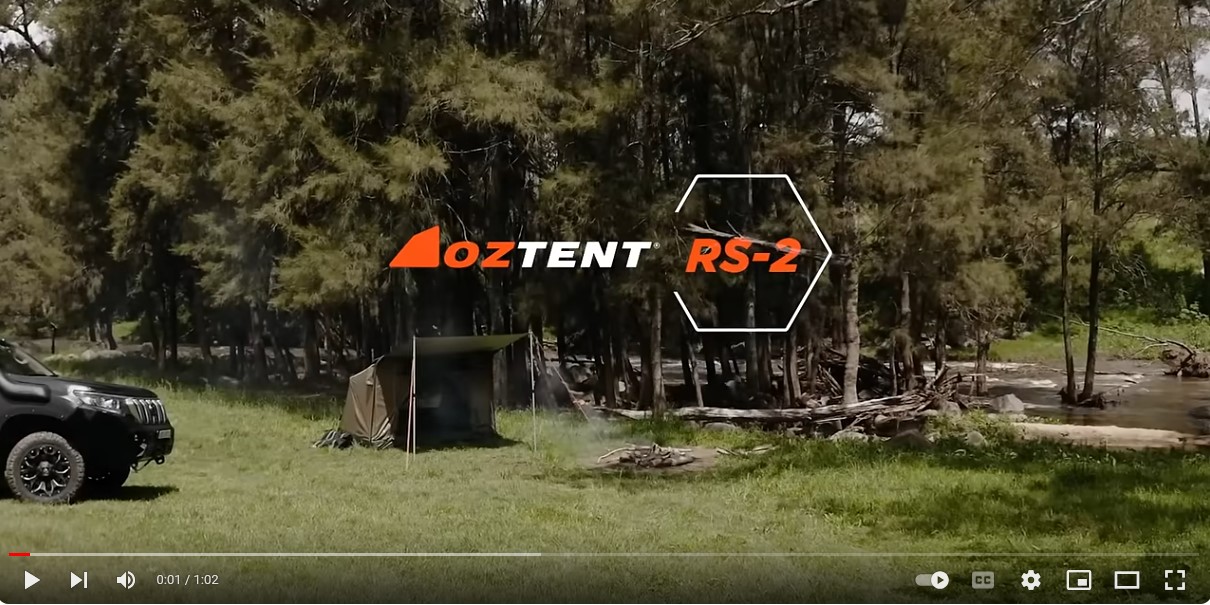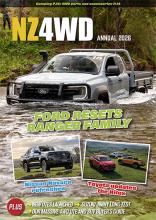It’s been a while since NZ4WD drove a Hyundai. Before Covid, in fact. Way back when the previous Santa Fe had a mid- life refresh.
The arrival of the very new fifth generation Santa Fe in late 2024 called for a test drive though. The new version is visually striking, moving away from the stylish curves of the outgoing model and aligning more with the bigger Palisade.
The Santa Fe model range is now three models: the Active, the Limited and the premium Calligraphy.
It’s taken us a few months to get into this one, but it’s well worth it. And in our defence, UK magazine Autocar only reviewed the SUV in November last year; Top Gear only got it in December. The Santa Fe can be seen as the tech and feature flagship for Hyundai. So much great tech, so many subtle advances which will find their way onto other models. Of note, the ADAS driver safety assists are admirably subtle. Lane alerts, driver awareness alerts, cruise control-based alarms are all present, but never at an annoying level.
The new Santa Fe is all new and packed with more features. Even at the model range entry point there are bigger wheels, heated seats, wireless charging, a better media system, more safety tech, powered seats, privacy glass and a powered tailgate.
We had some misgivings about this one, because Hyundai had laid on the flagship Calligraphy version, all satin bronze paint, glossy 20-inch alloy wheels and cream leather interior. Being a grubby bunch, we could see that leather taking a bit of a pounding, and the satin-finish exterior came complete with a request not to clean the vehicle in a brush-type car wash.
As it turned out, we need not have worried. A week of here-and-there in the Santa Fe hardly smudged the leather. And of course, we never use rough old car washes, so the paint stayed mint with a light hose-off and bucket-wash.
The current range is priced at $74,990; the top end Calligraphy is a little over $100,000.
Big seven-seat SUVs like the Santa Fe have pretty much killed off people-carrier MPVs these days. They drive better, have vastly improved safety systems and passenger- pleasing interior features.
Where MPV platforms were often borrowed from a manufacturer’s commercial van range, SUVs literally drive like cars.
The Hyundai Santa Fe is a family SUV, right-sized for New Zealand driving conditions. It has seating for seven, though the third row is best left to the kids.
It will go off-road, but it’s not intended for extreme overlanding.
For most people it’s better off without that added weight and complication.
The new Santa Fe waves goodbye to Hyundai’s very good diesel engine, offering only petrol hybrid power. It’s a very good hybrid though and it helps the bluff-fronted SUV hit some excellent fuel numbers. All three models hit 6.2 litres per 100km.
On offer across the model range is a turbocharged 1.6-litre four-cylinder petrol engine and an electric motor giving a combined 172kW at 5,600rpm and 367Nm across a wide 1,000rpm-4,000rpm band.
There’s a decent brake ‘regen’ system that sends energy back to the battery when braking or off the throttle.
The hybrid system’s lithium-ion battery sits under the rear seats.
The transmission is a six-speed unit with shift-by- wire technology. Drive is selected from a big wand to the right of the steering column, and gears can be manually shifted using paddle shifters mounted each side of the steering wheel.
There are Eco and Sport drive modes and selectable terrain modes for snow, mud and sand.
The all-wheel-drive system does without a transfer-case selectable low range. This and the SUV’s 177mm ground clearance are direct indicators of the urban/all road intent of the design. For those who are heading off-road, an XRT pack includes a 30mm suspension lift and all-terrain tyres.
The suspension is very good, with MacPherson struts/ coil springs, gas-filled shock absorbers and anti-roll stabiliser bars at all four corners.
All Santa Fe models have 20-inch aluminium alloy wheels; our Calligraphy stands apart from the Active and Limited with its own unique design. All models have 255/45 R 20 tyres.
The Santa Fe diverges from other recent SUV arrivals, having an excellent 5.8-metre turning circle.
Inside, occupants are treated to some well-considered and almost minimalist design.
In front, there’s a wide, gently curving screen with two 12.3-inch displays, a driver display and central touchscreen.
The Calligraphy has a head-up display and can switch from ‘regular’ rear view mirror to a pure digital view – handy if bulky loads are carried.
There are physical controls for infotainment shortcuts (including a pair of customisable buttons), climate controls and vehicle functions (auto hold, drive mode).
There are two gloveboxes with a shelf between them, as well as storage space under the ‘flying bridge’ centre console. There’s room for two phones. Rear passengers get an extra drawer, and the armrest cubby can be opened from both the front seats and the back.
Let’s talk design. The new look is a radical departure for Hyundai, but there’s good reason.
Santa Fe’s squared-off proportions and straight sides mean that very little space is wasted. The new square shape is dictated by the designers’ aim to create massive space in the back. And it’s worked. The middle-row seats are supremely comfortable, and they slide to give extra room for access to the third row. Second-row passengers aren’t short of space to stretch out, and the third row isn’t compromised on head room either. Those occupants get their own cupholders, charging ports and an air vent with fan control.
Practical storage is plentiful: a useful bin underneath the console, cup holders in each row, dual mobile phone pads, storage for larger bottles in the doors.
Apple CarPlay and Android Auto can be connected wirelessly, and Apple’s system was stable and reliable during our test.
Hyundai’s built-in navigation system is excellent, with clear directions and accurate traffic updates. Calligraphy has a dual sunroof and solar/privacy glass; the rear passengers can also deploy mesh screens on their windows.
Overseas media are calling Hyundai’s new UV-C sterilisation compartment “the automotive feature we never knew we needed” Perhaps. Standard on the Calligraphy, it allows small items like phones, keys, wallets, and the like to be UV-sterilised, no matter where you might be.
The Santa Fe is 1.90m wide (2.2 including mirrors) and 4.83m long, which is a useful 12cm shorter and a bit slimmer than an XC90 or Discovery.
The exterior is distinctive. Introvert buyers may want to consider something more bland. There are solid roof rails – not just decorations – and when there’s gear up top, step-up access is improved by a clever handhold in the C-pillar. Put a foot on the door sill, grab the handhold and step on up.
Up front, those headlights in the ‘H’ pattern are also indicator clusters, showing orange when switched on.
A 1.6-tonne braked towing rating is acceptable in a vehicle with a kerb weight of under two tonnes; buyers looking for more tow capability will need to look elsewhere.
So, let’s drive it
From rest, the Santa Fe will set off using just the electric motor, but the petrol engine quickly steps in. We found we’d usually only get down the driveway to the road on electric.
Though the Santa Fe is 45mm longer than the outgoing model and 60mm taller, it feels the same size when behind the wheel.
Though it’s under two tonnes, a 1.6-litre turbo engine would be underwhelming if not assisted by the hybrid system. Peak power does happen at quite high revs, but a wide torque band makes up for that. The switch between electric and petrol drive is smooth enough it’s hardly ever obvious and there’s no thrashing or buzzing as the revs climb.
The ratios in the six-speed auto are well matched too, making for a relaxed cruise at open road speeds. Six speeds? Yes. That seems at odds with the ‘more is more’ principle evident among auto makers these days. Does the Santa Fe ever feel like it needs more ratios? No. The six-speed auto is smooth, it doesn’t slur gear changes or hunt unnecessarily, and it’s enjoyable under any driving scenario. It works in the way only a conventional torque converter automatic can.
We took the Santa Fe up into the Hunua Ranges, where there are still a few dirt roads and a (very) few off-roading opportunities. On winding rural tarmac the SUV is a capable cruiser. We try not to use the phrase ‘car-like’, but this one really justifies the term. It rolls a little in corners but it’s predictable under brakes and acceleration.
Onto the gravel, the Hyundai remains perfectly poised. One of the advantages of a unibody design is it’s always going to out- handle a body-on-chassis vehicle, though the latter is of course better suited to rough off-road work.
The steering communicates well turning into sketchy gravel-bermed corners without being overly pushy. It handles high- crowned gravel roads with no drama.
Conclusion
The Hyundai Santa Fe’s on- road manners are excellent, and though it’s very much an urban SUV there’s much to recommend it to many who may want or need an AWD wagon – and that’s a fair number of Kiwis.
Crucially, the Santa Fe scores where it matters for a seven-seat SUV. The interior has all the design and material appeal an owner could wish for and combines it with clever practicality solutions and excellent usability.
It’s cavernous too, and that means it will lug all sorts of add-shaped or bulky gear.
While many rivals in the class are body-on-chassis, Hyundai’s decision to go monocoque (unibody) construction pays dividends around town and on the open road, meaning the Santa Fe is a superb weapon for 95 percent of SUV buyers and 95 percent of the things owners will expect it to do. Drive the Molesworth (in season)? Sure thing. Quick scoot to the snow this winter? You bet. A tootle along Karioitahi Beach? Yep.
We like:
• High-concept exterior design.
• Quiet, comfortable ride.
• Wide tailgate opening.
• Excellent cargo capacity.
• High end features in all three seat rows.


